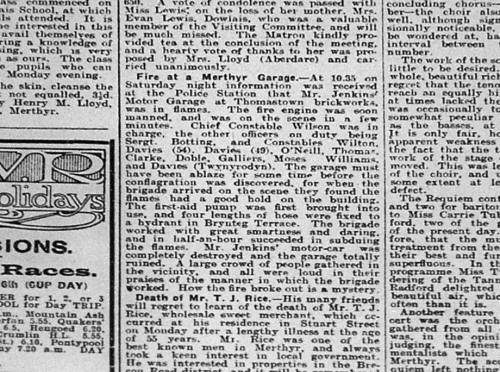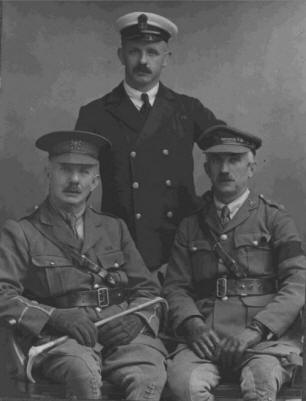|
Thomastown Brickworks |
||||||||||||||||||||||
|
Merthyr Tydfil |
||||||||||||||||||||||
|
John Jenkins was born in Merthyr Tydfil on 9th January 1838 and died 11th March 1889. He acquired the Thomas Town Brickworks in 1865.
John began work in the brickyard in Dynevor Street, Georgetown near the Three Horse Shoes. He then worked in the brickworks of N B Allen at Hirwaun. While here he negotiated with Mr Wild to purchase Thomas Town Brickworks.
William Wild is listed as a Brick maker. His son John Wild is listed in 1858 as a Brickmaker, Twyn-y-Rodyn.
A 99 year lease was granted on the site of Thomas Town Brickworks in 1848. The business was offered for sale as a Brick and Pipe Manufactory on 1st November 1865 and aged 27 John Jenkins purchased it.
When John Jenkins died, his wife Elizabeth ran the business. There were three sons Thomas Price, John Ernest & Gwilym Vaughan.
On 12th February 1898 The Merthyr Brick and Tile Company Ltd was formed. One reason shown for formation is in the Memorandum of Association: To acquire from Mr Thomas Price Jenkins, of Merthyr Tydfil, all that Brickworks and Premises, known as “The Thomas Town Brickworks”, Merthyr Tydfil, and also the Coal and Clay Level situate near the same.
18th March 1904 a notice in the London Gazette stated that the company “unless cause is shown to the contrary will be struck off”.
2nd November 1909 a Special Resolution issued and signed by Gwilym Vaughan Jenkins as Secretary, for the voluntary winding up of the Company. John Ernest Jenkins is the MD.
11th January 1910, Final Winding-up Meeting of Members held.
We believe that John Ernest Jenkins continued to run the business as the Merthyr Brickworks. He died of wounds on 25th November 1917 in France. We believe the business ceased completely at around 1920. Nicholas C. Jenkins |
||||||||||||||||||||||
|
Thomastown Brickworks - 1875 An extract from the 1875 'The Valley' O.S. Map - Click Here to Purchase. |
||||||||||||||||||||||
| This photograph shows the Thomastown Brickworks Chimney Stack (Top Right) | ||||||||||||||||||||||
|
Fire at Mr. Jenkins' Motor Garage - Merthyr Express April 28th 1914. (From the Merthyr Express) |
||||||||||||||||||||||
|
Thomastown Brickyard workers. 1890. The well dressed man, back row extreme left, is Possibly John Jenkins, owner of the brickworks from 1865. (Photograph courtesy of the John Owen Collection) |
||||||||||||||||||||||
|
Three Sons of John Jenkins (Owner of Thomastown Brickworks) Left:
Thomas Price Jenkins 1871-1941. He fought in the Boer War with Imperial
Yeomanry as part of Lord Roberts Bodyguard & transferred to Kitchener's
Scouts. He served in WW1 too. Thomas sold the Thomas Town Brickworks in 1898
to a specially formed company Merthyr Brick & Tile Co Ltd. The Jenkins
family appear to have had a controlling interest in the shares. (Photograph & Information Courtesy of Nicholas C. Jenkins) |
||||||||||||||||||||||
|
John Ernest Jenkins Wounded He ultimately died of his wounds in France on 25th November 1917. (From the Merthyr Express. Courtesy of Nicholas C. Jenkins) |
||||||||||||||||||||||
|
||||||||||||||||||||||
|
Do you have any photographs or information for this page? If so, please email us, by clicking the 'Contact Us' button. |
||||||||||||||||||||||
|
To Thomastown |
||||||||||||||||||||||
|
|
||||||||||||||||||||||






_NigelAspdin%20_small.jpg)
_NigelAspdin%20_small.jpg)
